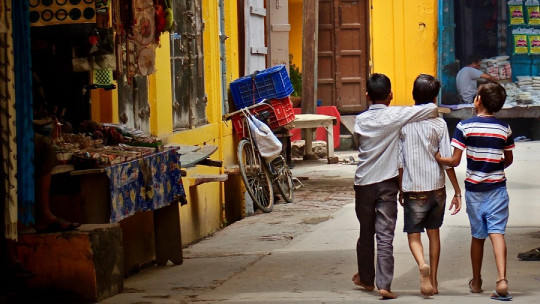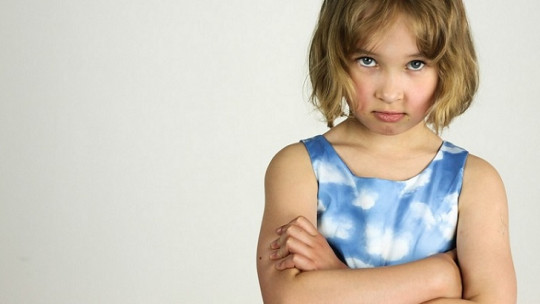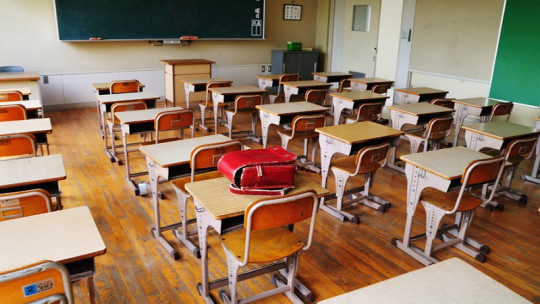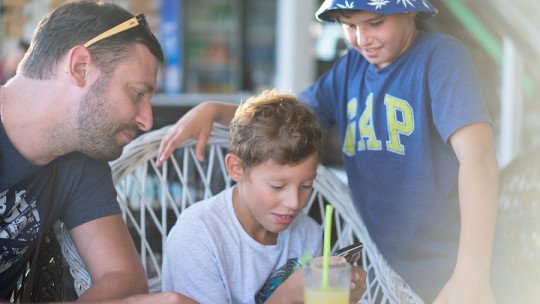Childhood is a vital stage where conflicts between equals frequently appear, whether between siblings, cousins, classmates, friends, etc. But… How to resolve a conflict between children?
Sometimes, as parents or professionals, we can feel a little lost or overwhelmed in these types of situations. How can we help them solve their conflict and learn from this exercise? In this article we offer you 9 guidelines to manage this type of situation.
Conflicts in childhood
It is totally normal for children to present conflicts among themselves during this vital stage of childhood Conflicts, disputes or arguments are frequent at these ages and are also necessary so that little by little the child’s personality and self-determination are built.
The fact that each person has their own desires, needs and ideas makes this type of situation likely. Beyond them, the important thing will be that they themselves (with adult support, when necessary) learn to manage, tolerate and confront these types of solutions.
They must understand that many disputes arise from the diversity of opinions and desires, and that the importance of bringing positions closer, listening and empathizing are key elements to resolve this type of conflict.
Through conflict, children can learn new ways of interacting, knowing others, and knowing themselves to listen, to empathize, to open their mind… Each conflict will be an opportunity for them to grow and evolve.
Furthermore, this type of situation opens the doors for us to work with them on different types of values related to understanding, education and socialization. On the other hand, they allow us to work on behavioral disorders, mental rigidity, assertiveness, difficulties in expressing desires and needs, etc. However, in order to work on all these aspects, it is important that we first learn how to resolve a conflict between children.
How to help resolve a conflict between children
How to resolve a conflict between children? Here we will see several guidelines to do so.
These are psychoeducational strategies, techniques and tools that adults can apply to promote this conflict resolution, but that children can finally integrate and apply autonomously in their daily lives. once they have been taught and have been able to put it into practice
That is to say, here the figure of the adult will be more of a model/mentor and accompaniment, but at the end of the day the work will have to be done by the children. Logically, depending on their age (and their level of maturation) we can adapt these guidelines to one methodology or another.
1. Identify the problem
What has happened? It is important that they themselves can verbalize what has happened, and can agree on the version of events
If this cannot be achieved, at least each person should explain what they think happened, how they felt, etc. Identifying the underlying problem is the first key to how to resolve a conflict between children.
2. Offer a space for them to express themselves
In line with the above, another key idea on how to resolve a conflict between children is to offer a space for emotional expression. That is, we must give them enough space to express how they felt at the time of the conflict and how they are feeling at this moment.
How has the other person made you feel? Do you think she acted well? And he himself, has he acted well? Here it will also be important that the other child listens to you (let them listen to each other without interrupting each other).
3. Foster mutual understanding
It will be important that in addition to listening to each other, children can put empathy into practice and come to understand each other. If a priori they cannot understand each other, at least try.
For it The adult may intervene by offering explanations about why each of them has acted in this way or another If there is no absolute understanding of the other’s behavior, at least there is respect between both.
4. Look for joint solutions
Another key idea on how to resolve a conflict between children is to help them find joint solutions. That is, each one can contribute possible solutions to the conflict, but The interesting thing would also be if they reached a joint solution (for example through brainstorming).
Here the adult can also intervene and accompany. It will also be a good time to “take the edge off” of the matter (if it has not been a serious conflict) and to bring positions closer, relativize, etc.
6. Teach them to manage emotions
Emotional education is a key factor that will allow us to help our children (and our students, family members, patients, etc.) in their emotional management. Emotions, and especially intense emotions (such as anger, rage, etc.), can lead us to commit impulsive, inappropriate actions or actions that cause harm to others.
It is because of that we must practice by example and show them alternative ways of acting (avoiding hitting, yelling, self-harm…). Alternative behaviors to this could be: reflecting before speaking or yelling and hitting, speaking calmly, breathing before acting, putting yourself in the other’s place, staying calm, etc.
7. Encourage negotiation
Another key point that will allow us to work on how to resolve a conflict between children is to encourage negotiation between them. It would be a similar point to seeking joint solutions, although not the same.
Here It is about fostering a kind of “deal” that includes an understanding of what has happened and a guideline for acting from now on: for example, divide up the turns to watch TV, do not disturb the other when they are calm, listen to them before speaking, etc.
In this sense, we must convey to them the importance of being flexible and open with others, and how good they can feel by reaching an agreement that they must then respect.
8. Apologize if necessary
It is very good that children can reach agreements, negotiate, listen to each other… But sometimes, when one of the two has acted badly (or more than one), It is important that you can apologize and be aware of the seriousness and/or consequences of your actions
That is why we must convey the importance of forgiveness and repentance, and that they can verbalize that forgiveness. The goal is for them to express it sincerely, not “because we are forcing them.” “To make mistakes is human, but to rectify is wise.”
9. Track the situation
It may be that the situation consisted of a one-off conflict, or it may also be that it involves recurring conflicts between the same children. It is important to detect these types of dynamics if they exist, and act accordingly.
This way, Keeping track of the situation will become another key factor on how to resolve a conflict between children in this case, focused on preventing possible conflicts or discussions.
We can do this in different ways (also depending on whether we act as teachers, educators, therapists, parents…), but the important thing will be to observe and take note of the relationship between these people.









